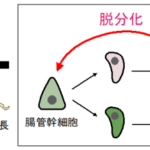2023-09-11 カロリンスカ研究所(KI)
◆AIサポートの放射線医は、2人の放射線医よりも効果的であり、スクリーニング乳房X線撮影におけるAIの導入が可能であることが示されました。将来的には、AIがスクリーニング乳房X線撮影の評価の大部分を担う可能性があるとされています。
<関連情報>
- https://news.ki.se/more-cases-of-breast-cancer-can-be-found-with-the-help-of-ai
- https://www.thelancet.com/journals/landig/article/PIIS2589-7500(23)00153-X/fulltext
スウェーデンにおけるマンモグラフィ検診における乳癌検出のための人工知能:前向き、集団ベース、ペアリーダー、非劣性試験 Artificial intelligence for breast cancer detection in screening mammography in Sweden: a prospective, population-based, paired-reader, non-inferiority study
Karin Dembrower,Alessio Crippa,Eugenia Colón,Martin Eklund,Fredrik Strand,and theScreenTrustCAD Trial Consortium
The Lancet Digital Health Published:September 08, 2023
DOI:https://doi.org/10.1016/S2589-7500(23)00153-X

Summary
Background
Artificial intelligence (AI) as an independent reader of screening mammograms has shown promise, but there are few prospective studies. Our aim was to conduct a prospective clinical trial to examine how AI affects cancer detection and false positive findings in a real-world setting.
Methods
ScreenTrustCAD was a prospective, population-based, paired-reader, non-inferiority study done at the Capio Sankt Göran Hospital in Stockholm, Sweden. Consecutive women without breast implants aged 40–74 years participating in population-based screening in the geographical uptake area of the study hospital were included. The primary outcome was screen-detected breast cancer within 3 months of mammography, and the primary analysis was to assess non-inferiority (non-inferiority margin of 0·15 relative reduction in breast cancer diagnoses) of double reading by one radiologist plus AI compared with standard-of-care double reading by two radiologists. We also assessed single reading by AI alone and triple reading by two radiologists plus AI compared with standard-of-care double reading by two radiologists. This study is registered with ClinicalTrials.gov, NCT04778670.
Findings
From April 1, 2021, to June 9, 2022, 58 344 women aged 40–74 years underwent regular mammography screening, of whom 55 581 were included in the study. 269 (0·5%) women were diagnosed with screen-detected breast cancer based on an initial positive read: double reading by one radiologist plus AI was non-inferior for cancer detection compared with double reading by two radiologists (261 [0·5%] vs 250 [0·4%] detected cases; relative proportion 1·04 [95% CI 1·00–1·09]). Single reading by AI (246 [0·4%] vs 250 [0·4%] detected cases; relative proportion 0·98 [0·93–1·04]) and triple reading by two radiologists plus AI (269 [0·5%] vs 250 [0·4%] detected cases; relative proportion 1·08 [1·04–1·11]) were also non-inferior to double reading by two radiologists.
Interpretation
Replacing one radiologist with AI for independent reading of screening mammograms resulted in a 4% higher non-inferior cancer detection rate compared with radiologist double reading. Our study suggests that AI in the study setting has potential for controlled implementation, which would include risk management and real-world follow-up of performance.
Funding
Swedish Research Council, Swedish Cancer Society, Region Stockholm, and Lunit.


